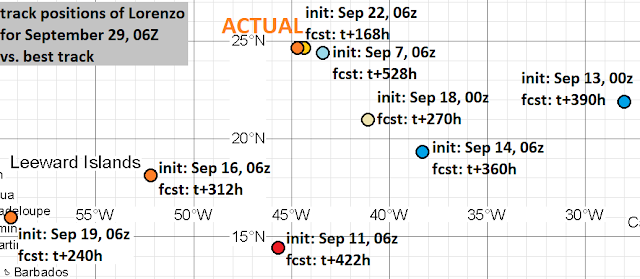Verification of tracks made of Lorenzo using GEFS mean fields

I made eleven tracks of Hurricane Lorenzo. Within 384 hours of cyclogenesis, there were no instances, when I missed cyclogenesis entirely. Peak intensity was surprisingly correct, given how anomalous Lorenzo was. Timing of cyclogenesis was excellent, but dissipation times varied a lot. Position accuracy was good, even outstanding at some lead times. A few tracks erroneously brought Lorenzo to Caribbean or nearby, but they were rare, and such erroneous motion happened at long lead times. As of this analysis, best track positions are available September 21, 06Z thru October 2, 12Z, and as such, position comparisons are possible only for this timespan. Since I give only SSHS categories in my tracks, I don't calculate intensity errors in units of speed, but in categories. For this purpose, I define tropical or subtropical storms as "Category 0", tropical or subtropical depressions as "Category -1" and non-existence of a tropical or subtropical cyclone...